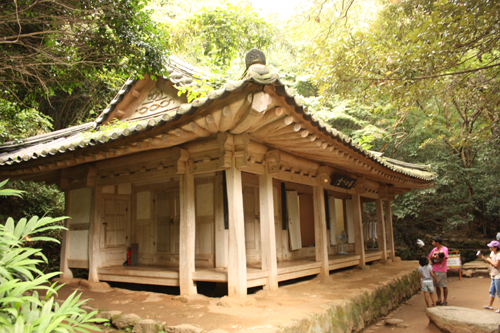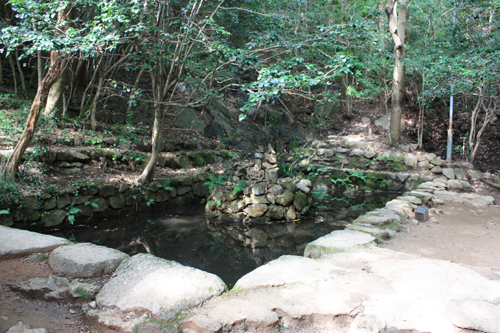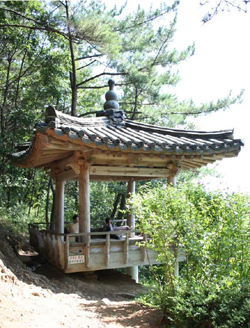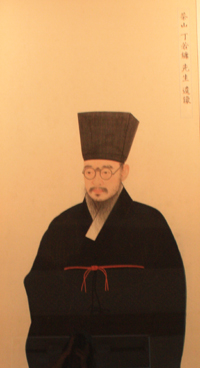다산 정약용과 강진
Gangjin,
the Incubator of Dasan’s Masterpieces

By Jeon Joo-hee, Tribune Reporter
How do you deal with hardship? Most people just try to overcome or surpass them. However, some people use those difficulties to better themselves. I’m going to tell you about a man who weathered the hardship of banishment.
Jeong Yak-yong was a representative scholar of Silhak, practical science of the last Joseon Dynasty era. He was exiled to Gangjin in Jeollanam-do for his involvement in the incident of Hwang Sa-young’s White paper describing persecution forced on Catholics. His brothers also died or were exiled for the same reason. In those days, Catholics were regarded as a threat to the country’s political and social structure. Because of this religious persecution, Jeong Yak-yong had to live in exile for about 18 years in Gangjin, where he continuously pursued his studies for the stabilization of the public welfare, writing more than 500 books during his banishment. How did he overcome his grief of banishment and leave such great masterpieces? To get answers to this question, this Tribune reporter visited Gangjin which might be considered his second hometown.
On Way to Dasanchodang

On August 10th, this reporter went to Gangjin for a visit and looked around the historical site of Dasan, Jeong Yak-yong’s pen name. It took an hour and thirty minutes by local bus from Gwangju. The forecast called for rain, so I was worried about bad weather but it turned out to be a clear and sunny day. The scenery from the bus window was full of summer greenness while heading for Gyuldong village where Dasanchodang is located.
Once off the bus, I walked along the road to Dasanchodang. The road is called “The road of tree roots” because tree roots are exposed across the entire road like stairs. It was a very surprising and marvelous road. When I arrived at Dasanchodang, I could see many big trees surrounding it. The calm and peaceful atmosphere of the place made me realize that Dasan loved nature, which was a great comfort to him.
Dasanchodang and His Shadows

Dasanchodang is a little thatched cottage where he lived for 10 years of his banishment. It is at the foot of the Manduk Mountain, which has a nickname, ‘Dasan’ from which he derived his pen name. In this place, he devoted himself to studying and teaching young students. Moreover, he wrote more than 500 books including Mokminsimseo which provided guidelines for local officials to govern people, Gueongseupyo about the organization and governance of a wealthy country and a powerful army and Heumheumsinseo about criminal law in respect to man and life.
Dasanchodang consists of three buildings. ‘Chodang’ the largest building, where Jeong Yak-yong lived, is located at the center. Seoam (the west hermitage) and Dongam (the east hermitage) stand on its left and right sides, respectively. Seoam is the building where his students stayed and Dongam is the place where Dasan used to reside and wrote his books. Originally, the three buildings were thatch-roofed houses but they were restored and changed to tiled-roofed houses in 1970. I could feel how he lived and his strong passion for study even though some parts of the place and cottages had changed with time.

Around Dasanchodang, there are four major spots related to Dasan. Dajo is a wide rock on which he made tea and drank it. As he loved tea, he chose ‘Dasan’, which means ‘tea tree hill’, for a pen name. Next to Dajo, there are Yeonjiseokgasan, a small pond with a heap of stones. At that time, he mobilized workmen and created ‘Seokgasan’, a three-story heap of stones around the pond. It was more beautiful than a real mountain and got the name Yeonjiseokgasan. Then, climbing up between two houses, Seoam and Chodang, I saw a huge rock named Jeongseok Rock. Dasan inscribed his surname ‘Jeong’ on the rock just before returning to Seoul. This rock is a little high off the ground, but it’s worth the climb for as I drew closer its message became clear to me. It symbolizes his upright personality and firm resolution not to be daunted by political hardships and to live for social reform. ‘Live right and frankly,’ that is Dasan’s message to us all.
Cheonilgak and Baekryunsa

Walking past Dasanchodang and Dongam, I found a small pavilion named Cheonilgak located near a cliff. It did not exist when Dasan was in exile and was erected to his posterity in 1973. As Chenilgak means heaven and the earth become one, this place commanded an exquisite view of Gangjin bay. Dasan sat here to soothe his longing for family and sometimes sighed over the exiled brother he missed. One of the visitors I met told me he often climbed Manduk Mountain. He respected Dasan’s spirit and felt it right there, especially in Cheonilgak. He was very proud that such a great man spent his banishment writing books in Gangjin. His works are very meaningful to today’s people.
When standing on it, the cool wind made me forget the season, even though it was a hot summer day. Then I began to understand how he might have overcome his hardship. Not only through learning and studying but also by enjoying the beauty of nature. Maybe he washed away most of his grief and difficulties by looking at those magnificent surroundings.
This reporter then moved to Baekryunsa along the road beside Cheonilgak. This road was full of camellia and other trees. Here, there was one more thing helping him through that adversity, a friend. Dasan assuaged his loneliness by associating mentally and philosophically with Monk Hyejang along this road. The monk was a friend and teacher, who helped him through his long banishment.
Dasan’s Way of Living a Wondeful Life

Finally, I visited the Dasan Legacy Museum where Dasan’s undisclosed articles were exhibited during the Gangjin celadon Porcelain Festival. It was a great experience for me. Many people visited there, became interested in Dasan and began to see him as one Korea’s most prominent scholars. In addition, the Ministry of Culture and Tourism selected the banishment road of Dasan Jeong Yak-yong for one of the country’s road restoration projects. They have chosen roads with culture, history and nature to give people a historic and meaningful message. As Dasan’s articles and his road were chosen by the ministry for their project, we can see that they are more than just relics of one person’s banishment.
Walking along the road Dasan walked along during his days of banishment, I could feel his strong spirit and desire to live a clear and full life. He used hardship to improve himself. In these aspects, Dasan is worthy of our respect and I think people have to visit there and recognize them. Sometimes when we face hardship we complain that we can’t endure it, because of our poor environment and arduous work. That is not true. It is because of the way we think, our inner mind. From now on, think of Dasan Jeong Yak-yong who made the best works while facing terrible hardship. Dasan’s life and spirit will help you endure and keep you from giving up.

